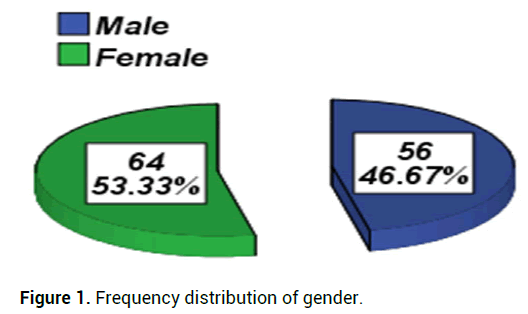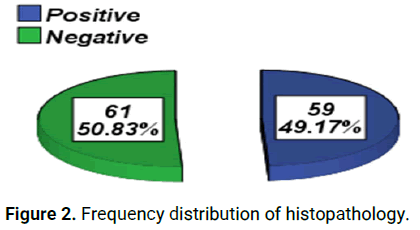Research Article - (2024) Volume 14, Issue 5
Acute appendicitis is the commonest abdominal surgical emergency with a lifetime incidence of 7%. Appendicitis is known to be the disease of the younger age group with only 5%-10% of cases occurring in elderly population. In patients clinically diagnosed of acute appendicitis the reported overall negative appendectomy rate is about 15%-20%; 10% in men and 25%-45% in women of childbearing age. This is associated with a perforation rate of 21%-23%.
Appendicitis • Abdominal surgical emergency • Appendectomy • Childbearing age
Ultrasound and CT scan are the imaging modalities that are helpful in diagnosis acute appendicitis. With the advent of Computed Tomography (CT), the diagnostic accuracy of appendicitis has dramatically improved. So far CT findings such as enlargement of appendix, appendicolithiasis and phlegmon, have been reported to successfully identify cases of acute appendicitis. Meta-analysis shows the use of postoperative abdominal CT scan is associated with lower negative appendectomy rates. The use of CT in absence of expedited imaging protocol may delay surgery, but this delay is not associate with increased appendicular perforation rates [1].
Many patients with suspected appendicitis are children or young adults 7, for whom CT radiation is of particular concern. Although Debatable, there are increasing concerns that even single typical abdomen CT examination may increase the risk of carcinogenesis. Studies have shown that 25% of all the CT scan are not clinically warranted and can be avoided [2]. The Alvarado score is clinical scoring system used to stratify the risk of appendicitis in patients presenting with abdominal pain. The Alvarado scoring system is based on three symptoms, three signs and two laboratory findings (Table 1).
In a meta-analysis by Ohle, et al. conducted in 2011, a review of 29 studies including 5960 subjects revealed that for a cutoff of 5 (criteria to observe/admit) there was a sensitivity of 99% (95% Cl: 97%-99%) and specifically of 43% (36%-51%). At a cutoff of 7 (criteria to proceed directly to surgery) sensitivity was 82% (76%-86%) and specifically was 81% (76%-85%). Winson, et al. shows that the sensitivity and specificity of CT scan is 74% and 60% respectively at Alvarado score of 6 [3].
The rationale of this study is to find out the group of patients based on Alvarado score that will certainly benefit from the use of city scan. As CT is preferred imaging modality in diagnosis acute appendicitis. Alvarado score is used to stratify patients into subgroup that will certainly benefit from CT use [4].
This study was conducted in surgical unit 1 holy family hospital for six month after approval from ethical committee of RMC and permission from the associated department, all the patients fulfilling the selection criteria reporting at surgical unit-I, Holy family hospital, Rawalpindi were informed about the study and written informed consent was taken. All patients presenting with pain RIF were assessed using Alvarado score and those who had Alvarado score 5 and 6 in male patients or 6 and 7 in female patients were included in the study and all of them were undergo CT scan. Alvarado score was calculated by senior registrar radiology department and patient was divided into two groups positive and negative of appendicitis. All patients were than undergo CT scan. Alvarado score was calculated by senior registrar radiology department and patient was divided into two groups positive and negative of appendicitis. All patients were than undergo appendectomy based on presence of acute appendicitis. The surgical procedural elements, prophylactic antibiotic and the surgeon performing procedures were standardized to eliminate any potential confounding effect [5]. Histological specimen was collected after appendectomy and interpreted by histopathological department. Histopathological findings were interpreted by senior registrar as positive or negative for acute appendicitis were calculated for both qualitative and quantitative variables. All data would be entered and analyzed using SPSS version 19.
Descriptive statistics
For qualitative variable like age mean and SD was calculated. For qualitative variable like age mean and SD was calculated. For qualitative variable histopathological findings, frequency and percentages were calculated. Sensitivity and specificity negative and positive predictive value, diagnostic accuracy and positive and negative likelihood ratios were assessed using standard formulae applied on 2 × 2 table for CT scan keeping diagnosis confirmed through histopathology as gold standard.
In this present study total 120 cases were enrolled. The mean age of the patients was 28.93 ± 10.21 years with minimum and maximum ages of 12 and 45 years respectively (Table 1). In our study 56 (46.67%) patients were male and 64 (53.33%) patients were females. Male to female ratio of the patients was 1:1 (Figure 1).
| Age (Years) | n | 120 |
| Mean | 28.93 | |
| SD | 10.21 | |
| Minimum | 12 | |
| Maximum | 45 |

Figure 1: Frequency distribution of gender.
In this study the mean value of Alvarado score of the patients was 6.05± 0.68 with minimum and maximum values of 5 and 7 respectively (Table 2). In this study CT scan diagnosed positive acute appendicitis in 63(52.5%) patients and it diagnosed negative acute appendicitis in 57 (47.5%) patients (Table 3).
| Alvarado score | n | 120 |
| Mean | 6.05 | |
| SD | 0.68 | |
| Minimum | 5 | |
| Maximum | 7 |
Table 2. Descriptive statistics of Alvarado score.
| Frequency | Percent | ||
|---|---|---|---|
| CT scan | Positive | 63 | 52.5 |
| Negative | 57 | 47.5 | |
| Total | 120 | 100 | |
Table 3. Frequency distribution of CT scan.
According to our study the histopathology diagnosed positive acute appendicitis in 59 (49.17%) patients and it diagnosed negative acute appendicitis in 61 (50.83%) patients (Figure 2).

Figure 2: Frequency distribution of histopathology.
According to our study the sensitivity, specificity, PPV, NPV and diagnostic accuracy of CT scan for diagnosing acute appendicitis was 84.75%, 78.69%, 79.37%, 84.21% & 81.67% respectively taking histopathology as gold standard.
The study results showed that in patients with age ≤ 30 years the sensitivity, specificity, and diagnostic accuracy of CT scan was 90.91%, 83.87% and 87.5% respectively, similarly in patients with age >30 years the sensitivity, specificity and diagnostic accuracy of CT scan was 76.92%, 73.33% and 75% respectively taking histopathology as gold standard (Table 4).
Histopathology |
Total | |||
|---|---|---|---|---|
| Positive | Negative | |||
| CT scan | Positive | 50 | 13 | 63 |
| Negative | 9 | 48 | 57 | |
| Total | 59 | 61 | 120 | |
Table 4. Comparison of CT scan with histopathology.
The study results showed that in male patients the sensitivity, specificity and diagnostic accuracy of CT scan was 75.86%, 85.19% and 80.36% respectively, similarly in female patients the sensitivity, specificity and diagnostic accuracy of CT scan was 93.33%, 73.53% and 82.81% respectively taking histopathology as gold standard (Table 5).
| Age (Years) | CT scan | Histopathology | Total | |
|---|---|---|---|---|
| Positive | Negative | |||
| ≤ 30 | Positive | 30 | 5 | 35 |
| Negative | 3 | 26 | 29 | |
| >30 | Positive | 20 | 8 | 28 |
| Negative | 6 | 22 | 28 | |
Table 5. Comparison of CT scan with histopathology stratified by age.
This present cross sectional validation study was carried out at surgical unit-1, holy family hospital, Rawalpindi to determine the diagnostic accuracy of CT scan at Alvarado score of 5-6 in males and 6-7 in females, in predicting acute appendicitis keeping histopathology as gold standard [6].
Acute appendicitis is the most common cause of an acute abdomen requiring surgery, with a lifetime risk of about 7%. Symptoms of appendicitis overlap with a number of other conditions making diagnosis a challenge, particularly at an early stage of presentation. The Alvarado score enables risk stratification in patients presenting with abdominal pain, linking the probability of appendicitis to recommendations regarding discharge, observation or surgical intervention [7,8]. In our study the sensitivity, specificity, PPV, NPV and diagnostic accuracy of CT scan for AP was 84.75%, 78.69%, 79.37%, 84.21% and 81.67% respectively taking histopathology as gold standard, some of the studies are discussed below showing the results in favour of our study as.
Ana Jalil, et al. concluded in their study that the presence of a high Alvarado score in adult males is highly predictive of acute appendicitis, however, in women of child bearing age other causes of similar clinical presentation lead to a low diagnostic accuracy of the score. Overall sensitivity, specificity, positive predictive value and negative predictive value of Alvarado score for acute appendicitis were 66%, 81%, 96%, 29%respectively. The sensitivity was higher though not significant, for males with a score over 7 than females with similar scores (97% vs. 92%) [9,10]. In a meta-analysis by Ohle, et al. conducted in 2011, a review of 29 studies including 5960 subjects revealed that for a cutoff of 5 (criteria to observe/admit) there was a sensitivity of 99% (95% Cl: 97%-99%) and specifically of 43% (36%-51%). At a cutoff of 7 (criteria to proceed directly to surgery) sensitivity was 82% (76%-86%) and specifically was 81% (76%-85%). Winson, et al. shows that the sensitivity and specificity of CT scan is 74% and 60% respectively at Alvarado score of 6 [11].
One study by Winson Jianhong Tan, et al. documented in their study that the sensitivity, specificity, PPV and NPV of CT scan for diagnosing appendicitis was 98.7%, 88.5%, 87.4% & 98.8% respectively. Different studies presented that with a reported sensitivity of up to 96.5% and specificity of about 98%, CT plays a major role in the clinical decision-making process in acute appendicitis and is considered as a first-line imaging modality in the diagnostic work-up for suspected acute appendicitis [12]. In the diagnosis of suspected acute appendicitis, CT has been reported to decrease the incidence of negative appendectomy. It has been reported to have a sensitivity between 55% and 98% and specificity of 78%-100%in the literature. The limitations of this technique are the user dependancy and the difficulty to obtain good image quality in some patients [13].
A study prospectively examined the diagnostic performance of clinical impression, the Alvarado score and CT scan in patients (age>15 years) who presented to the emergency department with suspected appendicitis. Sensitivity of clinical impression was 57.7% and was 42.2% for an Alvarado score of 8 or greater. Specificity was 71.6% and 79.1%, respectively.
According to our study CT scan is reliable and useful diagnostic tool at Alvarado score of 5-6 in males and 6-7 in females, in predicting acute appendicitis keeping histopathology as gold standard. This highlights the significance of utilizing CT imaging, particularly within the specified Alvarado score ranges, for accurate diagnosis. Incorporating CT scans into diagnostic protocols can enhance clinical decision-making and aid in timely interventions, potentially reducing complications associated with misdiagnosis or delayed treatment of acute appendicitis.
[Crossref] [Google Scholar] [PubMed]
[Crossref] [Google Scholar] [PubMed]
[Crossref] [Google Scholar] [PubMed]
[Crossref] [Google Scholar] [PubMed]
[Crossref] [Google Scholar] [PubMed]
[Crossref] [Google Scholar] [PubMed]
[Crossref] [Google Scholar] [PubMed]
[Crossref] [Google Scholar] [PubMed]
[Crossref] [Google Scholar] [PubMed]
[Crossref] [Google Scholar] [PubMed]
[Crossref] [Google Scholar] [PubMed]
[Google Scholar] [PubMed]
[Google Scholar] [PubMed]
Citation: Adnan N. "Prospective Diagnostic Accuracy of Alvarado Score and CT Scan in Evaluation of Suspected Appendicitis". Surg: Curr Res, 2024, 14(5), 1-4.
Received: 24-Mar-2024, Manuscript No. SCR-24-3716; Editor assigned: 27-Mar-2020, Pre QC No. SCR-24-3716 (PQ); Reviewed: 10-Apr-2020, QC No. SCR-24-3716; Revised: 15-May-2024, Manuscript No. SCR-24-3716 (R); Published: 12-Jun-2024
Copyright: © 2024 Adnan N. This is an open-access article distributed under the terms of the Creative Commons Attribution License, which permits unrestricted use, distribution and reproduction in any medium, provided the original author and source are credited.